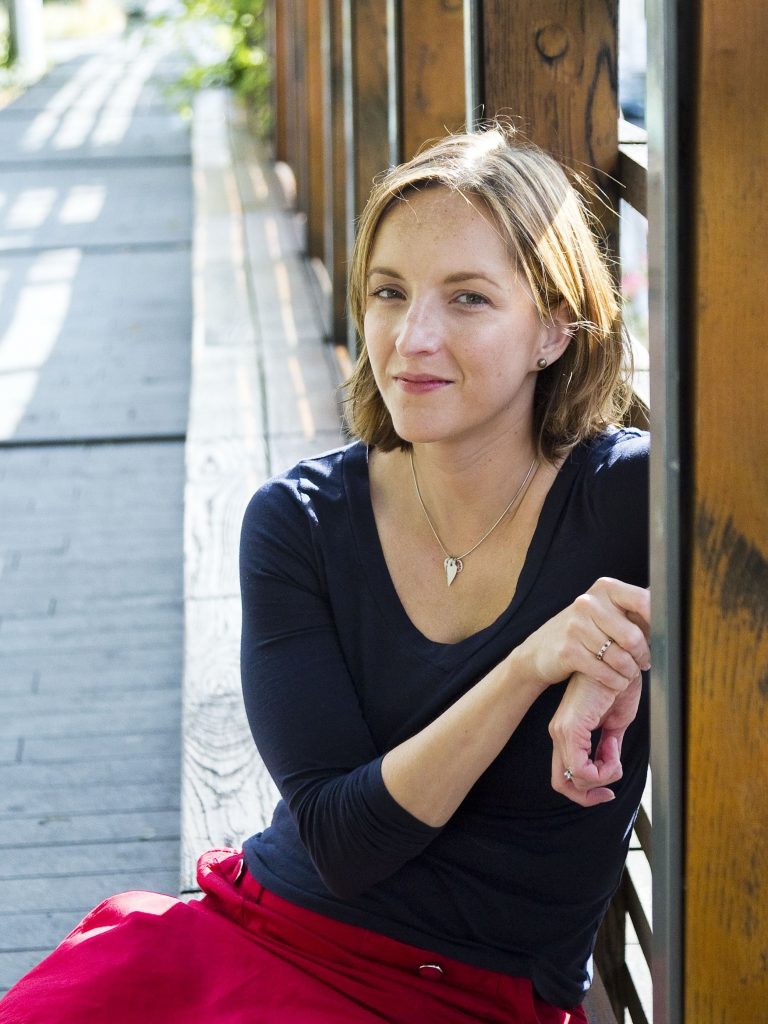
BY JUDY CARMACK BROSS
Our series featuring tips from writers of many genres introduces the Chicago writer everyone is talking about: Rebecca Makkai.

This week began for Northwestern University professor Rebecca Makkai with the news that her novel, The Great Believers, rose to the top five of Chicago’s best-selling books. She appeared on Late Night with Seth Meyers recently, commenting, “Writing is like getting dressed in the dark.” This might be true, but she has brought one of Chicago’s most tragic times to light. Set in Chicago during the AIDS epidemic of the 1980s, The Great Believers draws its title from an F. Scott Fitzgerald quote from “My Generation”:
“We were the great believers. I have never cared for any men as much as for thee who felt the first springs when I did, and saw death ahead, and were reprieved—and who now walk the long stormy summer.”
In researching her book, Rebecca walked the streets of Chicago’s Boystown and explored Belmont Avenue. A survivor of the AIDS epidemic drew her a map of what it looked like in 1986, describing characters perhaps akin to Fitzgerald’s lost generation.
She describes:
“I came to know where every bar, restaurant, and store was then, and I was seeing a whole different Chicago. As I walked those streets, and also downtown by the County Building and the Dubuffet statue where there was an active demonstration in 1991, the information I had received allowed me to dive down into that period and those places. I had the same feeling that one would feel in a Civil War battleground, knowing that there was something underneath the way things currently are.
“The AIDS epidemic hit certain places very hard, and Chicago was one of them. We were in the thick of it. Storefronts were shuttered because the owners had died. There were literally fewer people on those streets.”
Thirty years later Fiona, one of the main characters who goes to Paris to track down her daughter who has disappeared into a cult, recalls: “They were dying one by one and two by two and, if you looked away for a second, in great horrible clumps.”
At the novel’s epicenter is Yale Tishman, development director of an Evanston museum gallery who is enticed to Door County, Wisconsin, by a collector of major art from the 1920s who has kept Modiglianis, Soutines, and others in her private collection. The museum gallery has no permanent collection, and this could be the start of something big. How Yale goes forward as he sees his friends dying all around him propels the book.
Rebecca said that she does not fictionalize real people in her novels: “For me, that is too limiting. It is said that everyone you write about, everyone you dream about, is yourself. I hope that my characters in this book are infused with the psychology of the time.”
As a Master of Fine Arts professor of creative writing at Northwestern University, Rebecca says she is always trying to convince her students on the importance of research:
“I tell my students: Don’t just rely on your own vague memories of going to the dentist—if you are writing about a dentist, talk to one. Get all the weird details and texture. Don’t limit yourself.
“In the opening scenes in my book, Yale attends a reception after a funeral. I didn’t know what they served at parties in 1985, so I went to Gourmet magazine for that year.”
Thus, the book describes “very pretty, very young men” serving miniature quiche, deviled eggs, and stuffed mushrooms to guests, with Cuba libres being drained at the bar. As the characters drive to Sister Bay to see Nora, the collector, they are listening to Billy Joel’s “She’s Always a Woman.” They panic because they have no flash bar for their Polaroid, which they hope to use to photograph the art. All seemingly small details, little individual snapshots of the time, but they all work together to transport you back to that era page by page.

Great Believers.
We asked Rebecca about her writing schedule:
“I feel I want to smack those people who say you have to write every day! Sometimes I am writing all the time, but I think that writers need some time off. Writing does not equal typing.
“It doesn’t mean that I am not thinking about writing when I am in my car and other places, and I might make a note or two. Often my dreams come into my writing, but I really don’t have any rituals or routines.”
When asked what makes her proudest as she reads the great reviews rolling, Rebecca replied:
“I feel a validation that I did get things right. I had wanted to know what it was like to be gay at that time, the medical procedures for AIDS; about it all. I have heard from primarily two types of people: first, those who lived through that time who have told me they lost a lover or friends. Some have said it is like a catharsis. And then from others who have told me that they lived in the suburbs and are appalled that they didn’t realize how many people were dying. Many have said that my book reminds us to think of the marginalized in our society today.
“Also, I feel that I got closer to those characters than I ever had before.”
As the story of Chicago’s losses in the 1980s reach more and more people through The Great Believers, who could not be a great believer in Rebecca Makkai?
***
Our series ends next week with a look at prodigious growth of memoir writing, and tips on how to get started writing yours.







